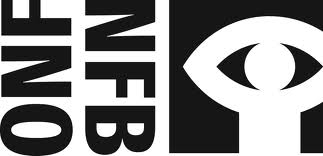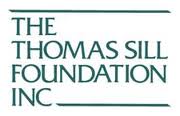Trish Adams (Brisbane, Australia)
Trish Adams completed her doctorate in Visual Arts at Griffith University in 2005. Her thesis explored the impact of biomedical engineering techniques on expressions and representations of corporeality. Her interactive installation machina carnis incorporated digital video micrograph image data of cardiac cells that she cultured in the laboratory by converting adult stem cells from her blood at the School of Biomedical Sciences, University of Queensland. She was the first artist to experiment on her own stem cells in this way. From 2009-2013, Trish was a Postdoctoral Research Fellow at RMIT School of Arts, Melbourne. Trish has also been visiting artist at the Visual & Sensory Neuroscience Group at the Queensland Brian Institute, University of Queensland from 2007-2012 where, under the leadership of Professor Mandyam Srinivasan, this research group focuses on the cognitive and navigational abilities of the honeybee. During this collaboration, Trish created the DVD installation Host in 2008, and in 2009, with her Sydney based collaborator Andrew Burrell, she was awarded the second Australia Council for the Arts Inter-Arts Board of MMMUVE_IT initiative. For this, they developed the “mellifera” project, which involved incorporating their direct observations of bee behaviours into both a virtual Second Life environment and a real-time installation context. In addition, Adams has presented her research findings at a number of conferences such as New Constellations: Art, Science and Society (Museum of Contemporary Art, Sydney, 2006); Perth Digital Art & Culture Conference (Perth, 2007); International Symposium of Electronic Arts (Singapore, 2008); and Eye of the Storm (Tate, London, UK, 2009); Virtual Anatomies Symposium (University of Queensland, Australia, 2011); Rewire Conference of Media Histories (Liverpool, UK, 2011); Transdisciplinarity (VCA, Melbourne, 2012); and the International Symposium of the Electronic Arts (Sydney, Australia, 2013).
Alana Bartol (Windsor, Ontario, Canada)
Alana Bartol is a multidisciplinary artist, arts advocate and community developer based in Windsor, ON, Canada. She has exhibited and performed nationally and internationally at various galleries including Contemporary Art Institute of Detroit (Detroit, MI), ARC Gallery (Chicago, IL) and the Art Gallery of Windsor (Windsor, ON). Her latest series, Forms of Awareness: Ghillie Suit, includes performance, sculpture, photography, installation and video. Works from this series have been presented at Propeller Centre for the Visual Arts (Toronto, ON), Ship in the Woods in collaboration with Hermione Spriggs (Del Mar, CA) and at Media City’s 19th Annual International Film Festival (2013), where she received a honourable mention for her first short film in the series.
Bartol holds a BFA (Honours with Distinction) from University of Windsor (2004) and a MFA from Wayne State University, where she was awarded the Thomas C. Rumble Fellowship and developed and taught the first Performance Art course in the Department of Art and Art History. She works for the Ontario Arts Council training staff to develop grant applications and community-engaged projects with artists and organizations. In 2013, she managed and established Neighbourhood Spaces, a socially-engaged residency program, initiated by Broken City Lab, Arts Council Windsor & Region and the City of Windsor.
Critical Art Ensemble (Buffalo, Washington, USA)
Critical Art Ensemble (CAE) is a collective of five tactical media practitioners of various specializations including computer graphics and web design, film/video, photography, text art, book art and performance. Formed in 1987, CAE’s focus has been on the exploration of the intersections between art, critical theory, technology and political activism. The group has exhibited and performed at diverse venues internationally, ranging from the street to the museum to the Internet. Museum exhibitions include the Whitney Museum and the New Museum in NYC; the Concoran Museum in Washington, D.C.; The ICA, London, UK; the MCA, Chicago; Schim Kunsthalle, Frankfurt; Musée d’Art Moderne de la Ville de Paris; and the London Museum of Natural History. The collective has written six books, and its writings have been translated into sixteen languages. Its book projects include: The Electronic Disturbance (1994), Electronic Civil Disobedience and Other Unpopular Ideas (1996), Flesh Machine: Cyborgs, Designer Babies, Eugenic Consciousness(1998), Digital Resistance: Explorations in Tactical Media (2001), Molecular Invasion (2002) and Marching Plague (2006).
Tagny Duff (Montreal, Quebec, Canada)
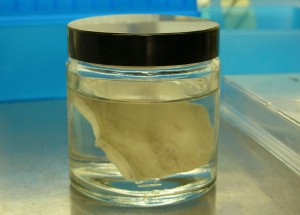
Tagny Duff – Living Viral Tattoos (2008-present: human and animal skin, Lentiviral vectors, HaCat cells)
Tagny Duff is an interdisciplinary artist working across bioart, video, performance, net art and installation works. Works including The Cryobook Archives (2010) and Living Viral Tatoos (2008) have been exhibited in the following solo and group exhibitions: Cellular Memorabilia (FoFA Gallery, Montreal, Canada, 2011), Visceral: The Living Art Experiment (curated by Oron Catts and Ionat Zurr at Science Gallery, Dublin, Ireland, 2011) and Evolution Haute Couture (Moscow Biennial 2009 and the National Centre for Contemporary Art, Keliningrad, Russia, 2008) and IX MediaForum and Moscow International Film Festival (2008) as part of the group exhibition curated by Dmitry Bulatov. Tagny Duff is director of Fluxmedia Research-Creation Network and Assistant Professor in the Department of Communication Studies at Concordia University.
Aganetha Dyck (Winnipeg, Manitoba, Canada)
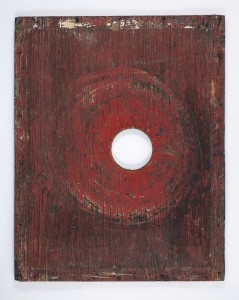
Aganetha Dyck – Scream – from the series with the working title FEEDER BOARDS (1991 – present; mixed media, wood, wax, marks left by honeybees and the beekeepers and their tools)
Aganetha Dyck is a Canadian multi-media artist who is interested in language and communication: how knowledge is transported and transcribed between humans and other species. I have chosen to sculpt, paint and draw collaboratively with honeybees for the past 22 years. My research has included the honeybee’s use of sound, sight, scent, vibration and dance. Research included the use of the honeybees’ pheromones that the honeybees use to communicate with each other, possibly with other species such as humans, possibly with the very foliage they pollinate. I ask what ramifications all living beings would experience should the honeybees disappear from earth?
Ted Hiebert (Seattle, Washington, USA)
Between Magnets (2011-2013: colour photography)
Ted Hiebert is a Canadian visual artist and theorist. His artworks have been shown across Canada and the Pacific Northwest and in group exhibitions internationally. Recent work has been shown at Place (Portland, OR, 2013), SAM Gallery (Seattle, WA, 2013), Kirkland Arts Center (Kirkland, WA, 2011) and Xi’an Academy of Fine Art (Xi’an, China, 2010), among others. Hiebert is a founding member of Noxious Sector Arts Collective, with whom he has recently exhibited and performed at Open Space (Victoria, 2011), PAVED Arts (Saskatoon, 2011), Eastern Bloc (Montreal, 2013) and the Goodman Art Centre (Singapore, 2013). He is the author of In Praise of Nonsense: Aesthetics, Uncertainty and Postmodern Identity (Montreal: McGill-Queens University Press, 2012), a member of the Editorial Board of the journal CTheory and an Assistant Professor of Interdisciplinary Arts at the University of Washington, Bothell.
Natalie Jeremijenko (New York City, New York, USA)
Natalie Jeremijenko directs the Environmental Health Clinic. Previously, she was on the Visual Arts Faculty at UCSD and the Faculty of Engineering at Yale University. Her work was included in the 2006 Whitney Biennial of American Art and the Cooper Hewit Smithsonian Design Triennial 2006-2007. She has a permanently installed Model Urban Development on the roof of the Postmasters Gallery in Chelsea, featuring seven residential housing developments, a concert hall and other public amenities powered by human food waste and continuing to explore new concepts of urban futures and our relationship to nonhuman organisms. Her work is described as experimental design (hence xdesign) as it explores the opportunity new technologies present for nonviolent social change. Her research centres on structures of participation in the production of knowledge, and the political and social possibilities and limitations of information and emerging technologies through public experiments. In this vein, her work spans a range of media from statistical indices (such as the Despondency Index, which linked the Dow Jones to the suicide rate at San Francisco’s Golden Gate Bridge) to biological substrates (such as the installation of cloned trees in pairs in various urban microclimates) to robotics (such as the developments of feral robotic dogs to investigate environmental hazards). The Environmental Health Clinic develops and prescribes locally optimized and often playful strategies to effect the remediation of environmental systems, producing measurable and mediagenic evidence, and the coordination of diverse projects to effective material change.
David Khang (Vancouver, British Columbia, Canada)
David Khang is a visual and performance artist based in Vancouver. Khang plays with language, often using it as a trope to investigate constructions and performativity of gender and race. Most recently, Khang has been incorporating his background in sciences to experiment with techniques, technologies and biomaterials borrowed from dental science. After completing a BSc (Physiology and Psychology) and DDS, both from the University of Toronto, Khang received his BFA from the Emily Carr Institute of Art + Design (2000) and MFA from the University of California (Irvine). He concurrently completed UCI’s Critical Theory Emphasis, for which he studied with Jacques Derrida, David Joselit and Étienne Balibar. Khang in a 2006-7 recipient of the Franklin Furnace Fund for Performance Art (NY). In 2010, he was a resident artist at SymbioticA Centre for Excellence in Biological Arts (Perth). Khang was born in Seoul, grew up in Toronto and currently works out of Vancouver, where he is an Adjunct Faculty at the Emily Carr University of Art + Design.
Andrew E Pelling (Ottawa, Ontario, Canada)
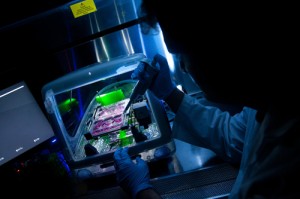
Andrew E Pelling – Re-Purposed (2013: glass, petri dishes, apple, human and animal cells, acrylic, plastic)
The Pelling Lab for Biophysical Manipulation is an exploratory space based at the University of Ottawa dedicated to understanding the limits of living systems. The lab is composed of a diverse group of experimentalists open to the possibilities that occur at the interface between disciplines. We are generally interested in understanding how living cellular systems can be controlled, manipulated and re-purposed using non-genetic and non-pharmacological approaches. By pushing living systems to artificial limits, the lab has discovered surprising behaviours and an astonishing ability of cells to adapt and respond to unusual stimuli. Re-Purposed is developed and presented by computer scientist Craig Bryan, biochemist Daniel Modulevsky and biophysicist Andrew Pelling.
Niki Sperou (Adelaide, Australia)
Adelaide artist Niki Sperou investigates the nexus between art, science, culture and their connection in the shaping of human identity. Sperou’s experimental intermedia works combine sculpture, textiles, photography, moving images, painting/drawing, traditional crafts, biological organisms and biotechnical laboratory processes and products. Since 2006, Sperou has been Artist in Residence at the Department of Medical Biotechnology, Flinders University, Australia, and tutors in art theory at the University of Southern Australia. She has led workshops and discussion groups on biotech arts in Australia and Macedonia and has herself participated in workshops by Oron Catts and Eduardo Kac at the Experimental Art Foundation in Adelaide, Australia. In 2004, she participated in Heath Buntings’s DIY DNA DAY and was a core group coordinator of the With the Body in Mind science and art event held at the Flinders Medical Centre in 2007.
Reva Stone (Winnipeg, Manitoba, Canada)
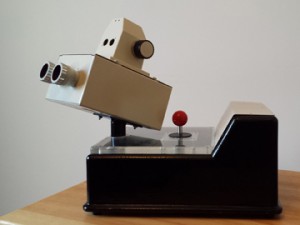
Reva Stone – Microforge (2013: Mixed media: altered found object, embedded computer, screen, custom software, motor, sensors, joystick)
Reva Stone is a Canadian artist who creates computer-assisted installations that engage with a variety of forms of digital technologies. Her practice has encompassed works such as Carnevale 3.0, an autonomous robot that reflects on the nature of human consciousness, and Portal, a work that combines custom software, media, robotics and mobile phone technology to create a work that appears to be sentient.
Stone has received numerous research and production awards from the Canada Council of the Arts and the Major Arts Awards from the Manitoba Arts Council. In 2002, Carnevale 3.0 received an Honourable Mention from Life 5.0: Art & Artificial Life International Competition, Fundación Telefónica, Madrid, Spain. In 2009, Stone presented at the Super Human: Revolution of the Species Symposium organized by the Australian Network for Art and Technology (ANAT) in Melbourne, Australia. Stone has exhibited her work across Canada and internationally.
Elaine Whittaker (Toronto, Ontario, Canada)
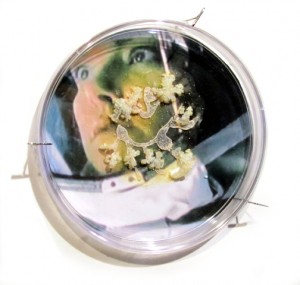
Elaine Whittaker – I Caught It at The Movies (2013: digital images, petri dishes, mylar, gouache, agar, Halobacterium sp. NRC-1
Inspired by an aesthetic of life in which art and science overlap, Elaine Whittaker’s transdisciplinary works consider biology as contemporary art practice. Situated in the realm of Bioart, she examines the forces that make us human, from the foundational processes and materials needed to form an organism (water, heat, minerals) to exploring the microscopic world of cellular ecologies. Her practice is principally based in installation, and includes sculpture, painting, digital images and sound. Exhibiting nationally and internationally, her artworks have been shown in group and solo shows examining issues related to water, blood, biotechnology, the genome, AIDS, women’s health, climate change and infectious diseases. Recent works have centred on the body as a site of infection, reflecting narratives and elements of anxiety found in popular culture, scientific research, and personal experience.
Whittaker has been an invited participant in international residencies, and workshops and festivals on biology and art. Her work has been featured in literary and medical periodicals, and at art, dance and science festivals. She is a recipient of grants from the Canada Council for the Arts, the Ontario Arts Council, and the Toronto Arts Council.
Amanda White (Toronto, Ontario, Canada)
Amanda White is an interdisciplinary artist living and working in Toronto, Canada. Her current work focuses on relationships between species, urban ecology and, most recently, people and plants. Her projects are often collaborative and have included web and community-based work, theatre production and gallery installations. White is a PhD student in Cultural Studies at Queen’s University (Kingston). She received a MFA from the University of Windsor in 2012 and a BFA in drawing and painting from OCAD in 2002.
Jennifer Willet (Windsor, Ontario, Canada)
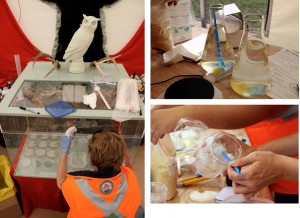
Jennifer Willet – BioARTCAMP: A Rocky Mountain Adventure in Art and Biology (2013: video installation)
Dr. Jennifer Willet is an internationally successful artist in the emerging field of bioart. From 2000-2007, Willet and Shawn Bailey collaborated on a project called BIOTEKNICA. She taught in Studio Arts at Concordia University from 2000-2007 and completed her PhD in the Interdisciplinary Humanities Program at the same institution. She now works as an Associate Professor in the School for Arts and Creative Innovation at the University of Windsor in Canada. In 2009, she opened a bioart research and teaching lab called INCUBATOR: Hybrid Laboratory at the Intersection of Art, Science, and Ecology in the School for Arts and Creative Innovation at the University of Windsor, Canada.
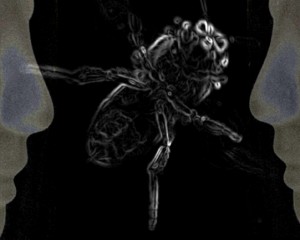
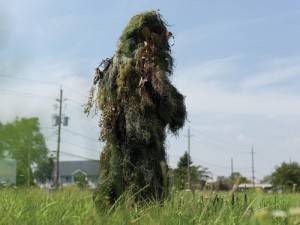
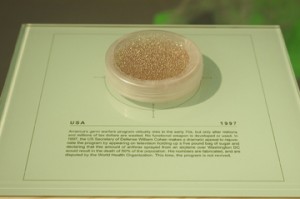
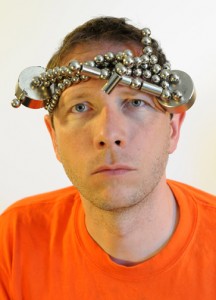

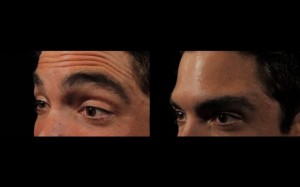
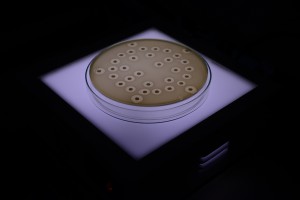
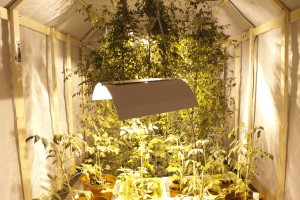
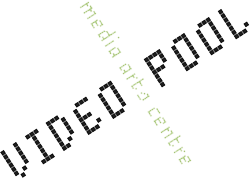
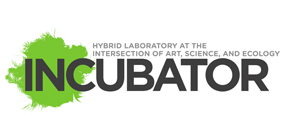

 As well as
As well as
 With additional support from:
With additional support from:




